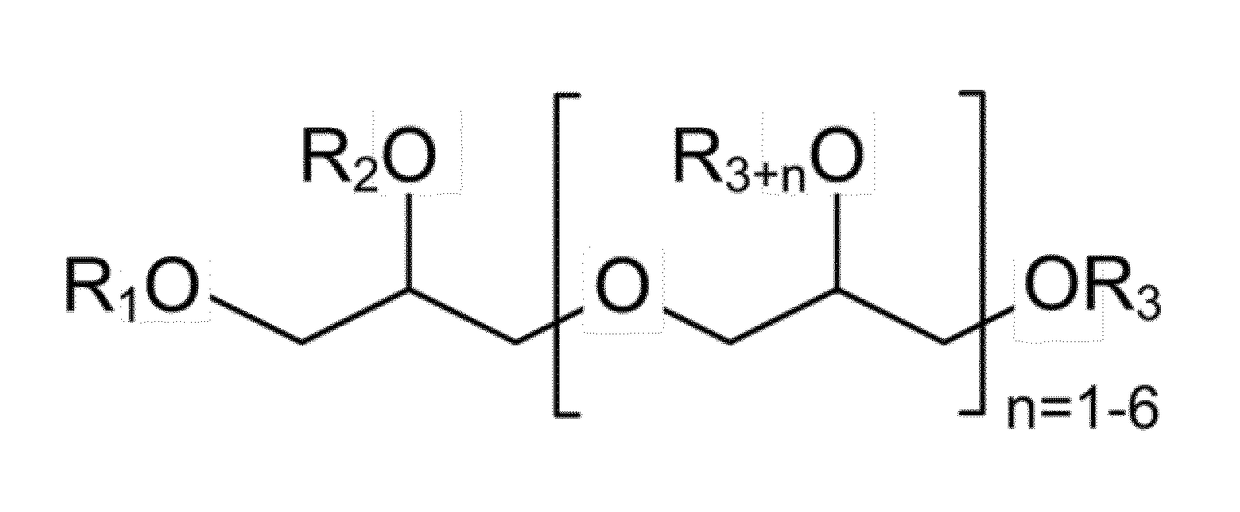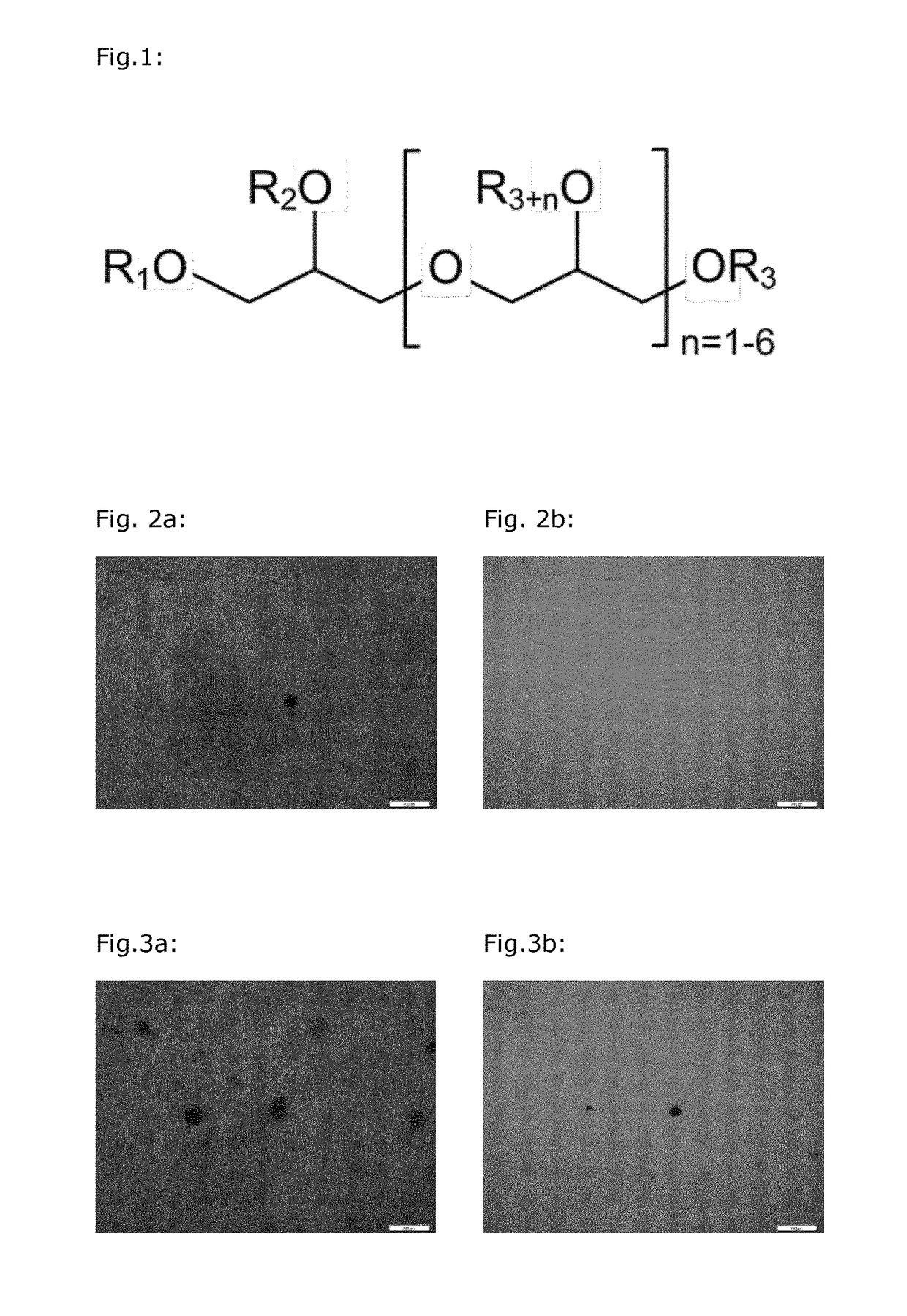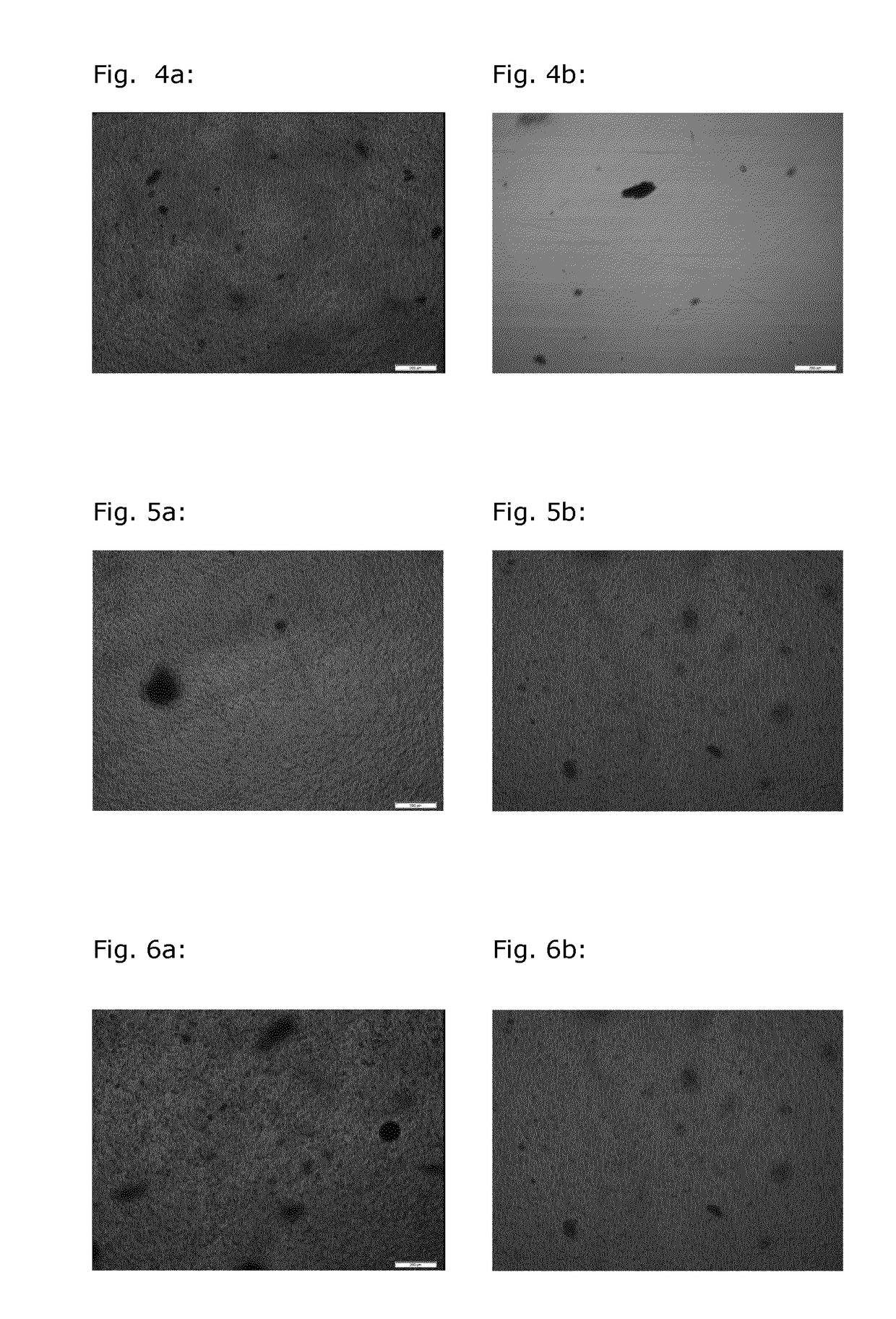Masterbatch comprising colorant particles and a polyol poly(hydroxy fatty acid) ester as dispersing agent
- Summary
- Abstract
- Description
- Claims
- Application Information
AI Technical Summary
Benefits of technology
Problems solved by technology
Method used
Image
Examples
example 1
of Thermoplastic Polymers Using Heliogen Blue
[0185]Colored polymer samples containing PGPR together with a blue pigment were prepared in order to investigate the ability of pphe dispersing agents to disperse colorant particles in thermoplastic polymers. Comparative polymer samples were also prepared in which PGPR was replaced by a commercial dispersing agent.
[0186]The following compounds were used:
[0187]Dispersing agent: PGPR 4150, purchased from Palsgaard
[0188]Comparative dispersing agent: Abril 1041: an ethylene bisstearamide (EBS) wax, purchased from Abril Industrial Waxes Limited
[0189]Colorant: Heliogen® Blue K 7090: blue pigment made of copper phthalocyanate, purchased from BASF.
[0190]Thermoplastic polymers: ExxonMobil® LLDPE LL 6101: a linear low density polyethylene resin, purchased from ExxonMobil; SABIC® PP 412MN40: a PP block copolymer, purchased from Sabic; and Elvaloy® AC 12024S: a copolymer of ethylene and methyl acrylate, purchased from DuPont.
[0191]The experiments wer...
example 2
of Thermoplastic Polymers Using Titanium Dioxide Pigment
[0202]Colored polymer samples were prepared as described in Example 1, except that titanium dioxide was used as colorant particles instead of Heliogen blue.
[0203]Two different titanium dioxide particles were investigated: Kronos 2220, purchased from Kronos International Inc., and Magnapearl® 2000, purchased from BASF.
[0204]Dispersing agent: PGPR Palsgaard 4150
[0205]Polymer: ExxonMobil™ LLDPE LL 6101: a linear low density polyethylene resin, purchased from ExxonMobil.
[0206]A colored polymer sample comprising 30% Kronos 2220 and 10% PGPR was prepared. Particles or spots of colorant do not appear to be visible at a magnifier of 10×. A microscope picture of the polymer sample at 400× is shown in FIG. 11 and may be compared with the microscope picture of a polymer sample comprising 30% titanium dioxide and 10% Abril 1041 wax in FIG. 10. It is seen that a much more uniform distribution of the titanium dioxide particles and no visual ...
PUM
| Property | Measurement | Unit |
|---|---|---|
| Fraction | aaaaa | aaaaa |
| Fraction | aaaaa | aaaaa |
| Fraction | aaaaa | aaaaa |
Abstract
Description
Claims
Application Information
 Login to View More
Login to View More - R&D
- Intellectual Property
- Life Sciences
- Materials
- Tech Scout
- Unparalleled Data Quality
- Higher Quality Content
- 60% Fewer Hallucinations
Browse by: Latest US Patents, China's latest patents, Technical Efficacy Thesaurus, Application Domain, Technology Topic, Popular Technical Reports.
© 2025 PatSnap. All rights reserved.Legal|Privacy policy|Modern Slavery Act Transparency Statement|Sitemap|About US| Contact US: help@patsnap.com



